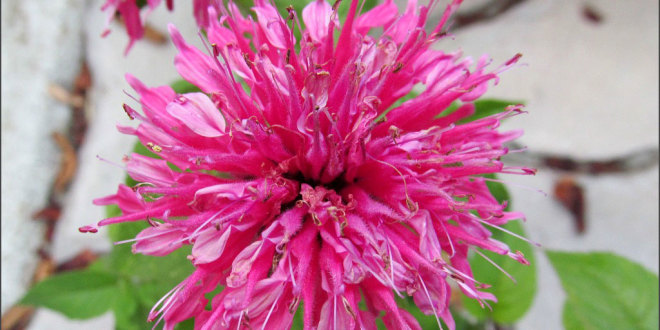Try growing bee balm in view of a window so you won’t miss the acrobatics of hummingbirds that visit in summer. Bee balm also attracts butterflies and bees.
Soil, Planting, And Care
For prolific blooms, plant in full sun; in the South and Southwest a little afternoon shade helps flowers last longer. Picking the flowers encourages a second round of blooms. Space plants 18 to 24 inches apart in rich, well-drained soil with a pH from 6.0 to 6.7. Amend the soil with compost or add a slow-release fertilizer to the soil before planting. Or, apply a liquid fertilizer such as Bonnie Herb & Vegetable Plant Food at planting and every couple of weeks thereafter. Although it will tolerate drought, bee balm will do much better if it gets adequate moisture; however, protect it from poor drainage, especially in winter. Water when leaves wilt in dry weather. Mulch in the spring.
In the late fall, cut plants back to within several inches of the ground. For a bushier shrub, pinch the tips of the stems when new growth appears each spring.
Bee balm spreads but not as aggressively as other members of the mint family. Every 3 or 4 years, dig up and divide the plants. Discard the old center section and replant the outer roots and shoots.
Troubleshooting
Bee balm can get powdery mildew. To avoid mildew, plant where there is good air circulation and avoid overhead watering. Also, cut back plants in the fall, remove old stems, and clean up old mulch.
Harvest And Storage
Pick bee balm flowers in summer as they appear. You can cut whole stems of bee balm to enjoy the flowers in a vase. Pick flowers for drying just before they open.
Uses
Use fresh flowers as a garnish for green salads, fruit salads, cakes, or preserves. The aromatic leaves serve as a substitute for mint and can be dried for tea. Dried leaves and flowers are also useful in sachets and potpourri.








